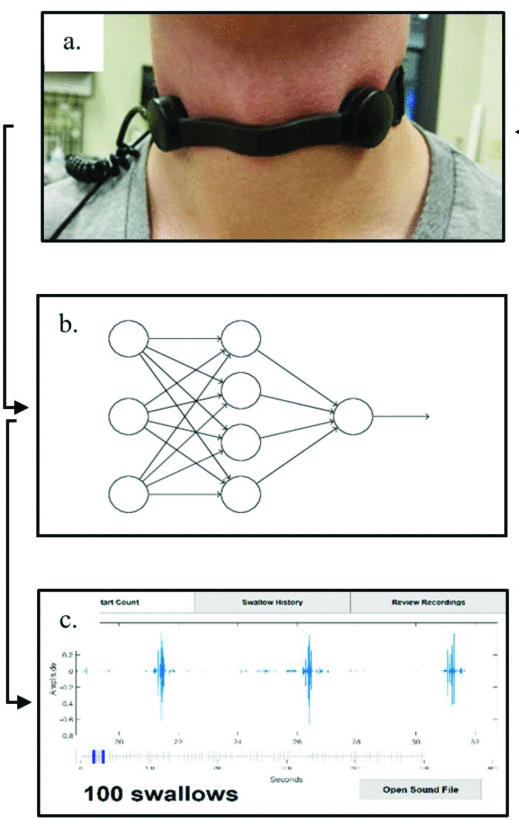Dignity in Swallowing
-
Challenge
Help patients who have lost the ability to swallow safely regain the basic function of eating to maintain nutrition, personal pleasure, and a universal social experience
-
Outcome
An ambulatory monitor for swallowing - a "Holter monitor for swallowing"
A non-invasive neuromodulation device harnessing stochastic resonance phenomenon in pilot study to impact swallowing and hemodynamics
Process
An Intersection of Science and Design
To me, this project was at the intersection of curiosity in science and practicality in design - taking inspiration from natural wonders while marrying that to a true unmet human need that causes suffering. I was supported as a Clayton Foundation Research Fellow to work with Dr. David Paydarfar and Dr. James Sulzur at UT Austin Dell Medical School.
We were fascinated by stochastic resonance - a phenomena where signal detection can be enhanced by applying just the right amount of noise to a system. This sounds abstract, but it's been observed across scales from neurons to ice ages!
Motivation from Patients
After my clinical experiences as a medical student, I chose to try to apply this theory to develop therapies for dysphagia, or difficulty swallowing. While not being able to eat was one of the most heartbreaking challenges I observed patients face, there are little to no treatments, with feeding tubes sometimes being the only option. I validated this need and my prototypes along the way by talking to patients, patient family members, and speech language pathologists.
Sensor Design
We used piezoelectric discs to test the effects of gentle vibration on swallowing and baroreceptor sensitivity in a human subjects pilot study, a type of neurostimulation that would meet the design requirement of being non-invasive.
We also realized there was no simple system to monitor swallowing. With an undergraduate senior design team, we trialed multiple types of sensors and ultimately re-purposed a throat microphone used for military special operations and applied machine learning algorithms to develop an ambulatory monitor for swallowing. That means the monitor can be used in a patient's home environment as opposed to being limited to a specialized clinic or hospital setting.
Human Subjects Pilot Study
We used piezoelectric discs to test the effects of gentle vibration on swallowing and baroreceptor sensitivity in a human subjects pilot study, a type of neurostimulation that would meet the design requirement of being non-invasive.
